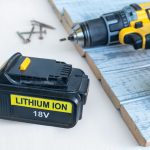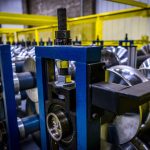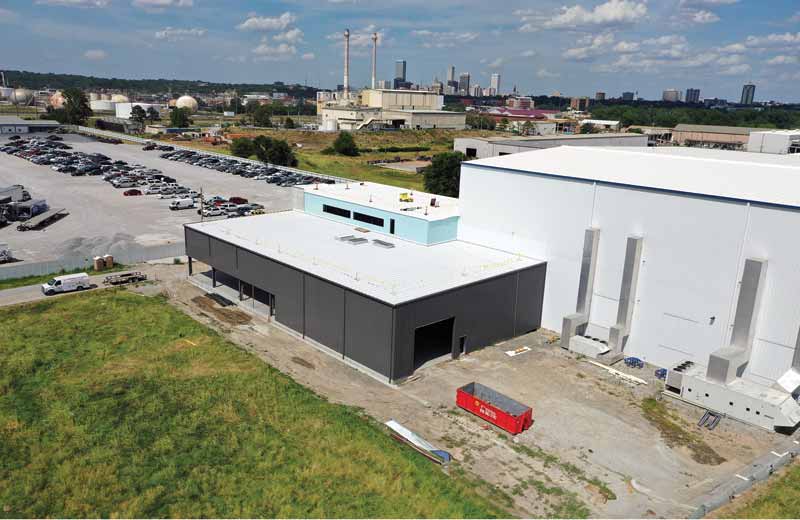
From large manufacturers to tech companies to the automotive industry and beyond, corporations are feeling the pressure from their customers to make business decisions based on sustainability. Whether it is product development, manufacturing, transportation, or packaging, the race is on to demonstrate their commitment to climate-friendly business practices in visible and significant ways. In this high-stakes consumer climate, sustainable building practices are more than just an option–they are an imperative.
Sustainable building practices are now front and center for most companies commissioning large commercial structures because they provide an opportunity for a significant carbon footprint reduction, and pre-engineered metal building systems are one of the best choices to meet the need. According to a July 2024 press release from the EPA, the construction materials manufacturing industry is responsible for 15 percent of all global greenhouse gas emissions. Meanwhile, according to The Office of Energy Efficiency and Renewable Energy (EERE), within the U.S. Department of Energy (DOE), commercial building operation consumes 35 percent of the electricity used in the United States, while generating 16 percent of all CO2 emissions.
Pre-engineered metal buildings (PEMBs) can deliver emissions and waste reduction in both the initial construction and ongoing operation because they can be constructed using highly efficient materials including insulated wall panels, next-gen metal roofing systems, and recycled steel.
Metal building systems and embodied carbon
To achieve meaningful gains in carbon reduction, it is not enough to focus on a building’s processes once it is built, or even the manner of construction–though those elements are important. These days, companies must also look upstream to the embodied carbon held in the building materials they choose. Embodied carbon refers to the total emissions profile of a product’s upstream phase, including sourcing, extraction, production, and transportation, as well as the maintenance of the building throughout its life cycle and disposal, and the recyclability of the building components at end-of-life. In this capacity, metal building systems have a distinct advantage over the competition.
PEMB materials that can reduce embodied carbon include high-strength, low-alloy steel, recycled steel and aluminum, eco-friendly paints and finishes, recycled concrete aggregate for foundations, and fly ash and slag cement, which has a lower embodied carbon footprint than Portland concrete.
When it comes to sustainability, recycled steel is hard to beat
PEMBs have a substantial advantage over most building methods because their primary component—steel—is completely reusable without any quality degradation, no matter how many times it is recycled. Furthermore, companies do not need to adopt any special purchasing practices to ensure their metal building system is made with recycled steel. All structural steel produced in North America naturally contains an estimated
90 percent recycled product by default, and steel framing includes at least 32 percent recycled steel. Additionally, modern steel recycling mills are highly water-efficient, requiring just 265 L (70 gal) of water to produce one ton of structural steel product.
Pre-engineering minimizes waste and optimizes resources
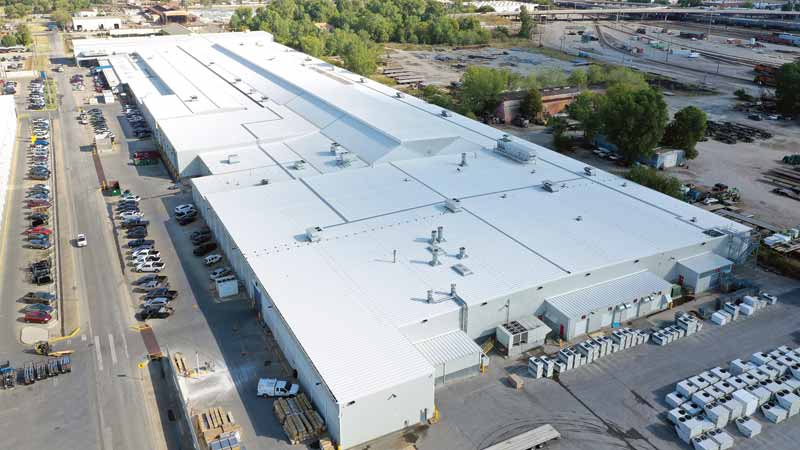
Pre-fabricating a building to exact specifications in a controlled environment leads to precision and efficiency, resulting in less waste in construction and fewer corrections after the fact. Lightweight and compact, pre-engineered building components require less fuel and fewer trips to deliver to a job site than traditional on-site building materials. Less on-site fabrication reduces noise pollution, produces less waste, and has a smaller impact on local ecosystems.
Additionally, pre-engineering a metal building system results in a faster erection time, which reduces the overall time to complete the job and lowers on-site energy consumption. The overall life cycle benefits of a pre-engineered metal building system include a longer lifespan, lower maintenance requirements, and fewer resources for upkeep. At the end of a PEMB’s useful life, most materials can be recycled, leading to lower landfill impact and a reduced need for raw materials sourcing and production for future materials development.
PEMBs and high-efficiency insulation
Insulated wall panels often used with metal building systems are designed to maintain comfortable internal temperatures while using less energy. High-efficiency insulation not only reduces energy demand, but
it decreases load and strain on HVAC systems, which results in fewer repairs and replacement parts, in addition to savings related to the manufacturing and transport of new equipment. The improved indoor air quality and moisture reduction, often associated with high-efficiency insulation, also lessen the possibility of mold development and lead to better health and comfort for occupants.
In addition, high-efficiency insulation is a game changer for more than walls. More energy is lost through the roof than any other part of a building, and PEMBs offer several insulation assemblies for roofs with and without decks, including cavity-filled blanket and board insulation options. The flexibility and efficiency of these roofing insulation options help buildings meet more stringent codes, and the requirements of building owners looking to achieve their sustainability goals.
Metal building systems and metal roofing make a durable, sustainable combination
With an average lifespan of 40 to 70 years and the durability to withstand harsh environmental conditions, metal roofing systems, combined with high-efficiency insulation, can significantly reduce a building’s carbon footprint, thus lowering operating costs and maintenance requirements. While other roofing types may need to be replaced up to three times over a building’s lifespan, metal roofing systems—when properly maintained—can last throughout the entire life of a building. This can be considered the ultimate in efficiency, as a one-and-done solution for the cost and embodied carbon expenditures related to repeated replacement.
Metal roof systems and sustainability in extreme operating conditions
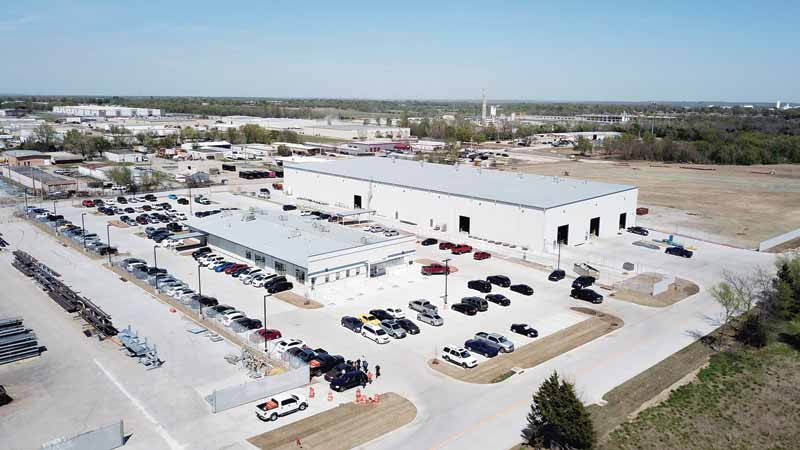
The durability of a metal roofing system can fortify a building against extreme weather including high heat, lashing rain, and hail. They are also more resistant
to wind and fire damage. Given they can withstand the impact of larger hailstones, they are ideal in states like Texas, which despite having one of the highest rates of hail storms in the United States, is experiencing a huge increase in large commercial construction projects. Currently, Texas has the highest number of energy and utility-related projects in the United States, as well as a large amount of mixed-use and infrastructure projects.
Builders in high-hail areas not only benefit from the longevity and durability of metal roofing systems but also benefit from the reduced risk of damage. The cost savings related to less maintenance and fewer repairs can result in a significant drop in long-term operational expenditures.
Finally, in terms of sustainability, the durability of metal roofing systems makes them ideal for renewable energy systems, including solar and small wind turbines. These systems can help a building qualify for insurance discounts. Metal roofs with “cool roof” coatings, combined with solar installation, offer dual advantages, leading to significant cost savings of both insurance premiums and energy.
Metal roofing systems and the quest for net zero construction
The holy grail of sustainable construction is, of course, net zero. Achieving net zero means that the carbon emissions generated by a project are 100 percent offset by the emissions the project may produce during its construction and over its lifespan. Metal roof systems can help both new construction and existing building retrofits move closer to net zero status due to the sustainability factors listed above. Pairing them with thermal insulation assemblies designed for efficiency enhances this effect.
When compared to petroleum-based roofing products, including asphalt and synthetic materials, the environmental benefits of metal roofing systems can be difficult to refute. Petroleum-based roofing products have a high embodied carbon footprint because they are sourced from fossil fuels. Extracting and refining petroleum to create roofing materials is highly energy-intensive and contributes to water pollution and habitat destruction. With limited recyclability, the disposal of these roofing materials can lead to high amounts of landfill waste, coupled with the threat of chemical and heavy metal leaching, which can contaminate groundwater. Further, while they are in service, asphalt and other petroleum-based roofing products can release volatile organic compounds into the atmosphere, as well as other odors and emissions that impact air quality, and cause adverse health effects to installation crews and maintenance workers.
Metal building systems are the leading edge of sustainable construction
Without a doubt, metal building systems are champions in the quest for sustainability. From top to bottom, their construction is more efficient, produces less waste, and results in a better building overall. For corporations looking to improve ESG scores and provide demonstrable proof of their commitment to environmental stewardship, they are hard to beat. The fact they can also deliver a faster build, lower maintenance and energy expenditures, longer operational life, better insurance premiums, and greater occupant comfort is the icing on the cake.
Justin Willett is the president of the Fleming Construction Group (FCG), Fleming Steel Erectors, and Fleming 8760. He is the current chairman of the Butler Advisory Council and serves as a member of the Oklahoma Uniform Building Code Commission. Since 1946, Oklahoma-based FCG has been a leader in pre-construction, construction, and post-construction/retrofit for non-residential and industrial facilities development. With a national portfolio, more than 70 million square feet of transactions, and a management team dedicated to blending experience with technological advancement, the FCG name is synonymous with innovation, quality, and expertise. Find out more at https://www.flemingconstructiongroup.com/.



